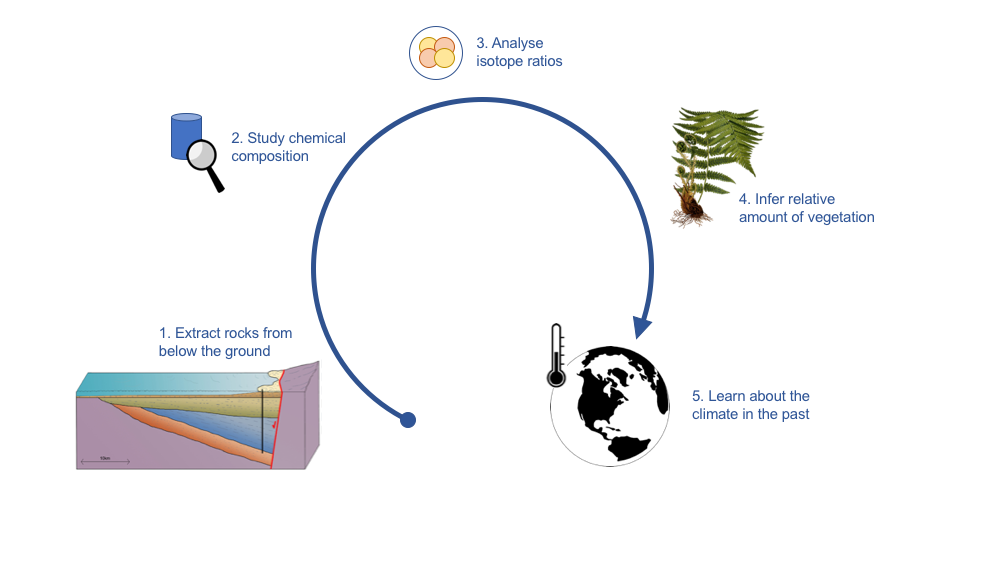Researcher Weimu Xu and her colleagues from the JET team have just published a new study based on their analysis of the rocks from the original Mochras core. Their work took just a small part of the core, that had been brought up from roughly 864 to 602 m depth below the surface. These rocks were formed during the “Toarcian” stage of the Jurassic period, which means they are between 183–174 Million years old.
Xu and the team used various methods to determine changes in the chemical composition of the rocks. For example, they studied “isotope” ratios of organic carbon: Atoms are made out of neutrons and protons. All carbon atoms have six protons in their nucleus. In addition, some have six neutrons, whereas others have seven neutrons. Because of the total of 12 parts (lighter) vs 13 parts (heavier) to the nucleus with the same number of protons, these are different isotopes of the same element. The ratio of the heavier to the lighter isotope of organic (e.g., originating from plants) carbon derived from rocks and fossils can tell us about the relative amount of vegetation in an area even millions of years ago, which can be used to infer knowledge about the climate.

Schematic showing the steps in learning about past climate from rock samples. Small diagram with succession of rocks at bottom left designed by Amgueddfa Cymru – National Museum Wales.
Their analyses suggest that during the Toarcian time, the climate was warmer and rainier than at other times, and comparison with data from other studies shows that this could have been a global phenomenon. This warmer climate was accompanied by increased amounts of weathering of rocks, which caused a lot of fine rock particles (sediment) to be flushed into the oceans, settling on the ocean floor.